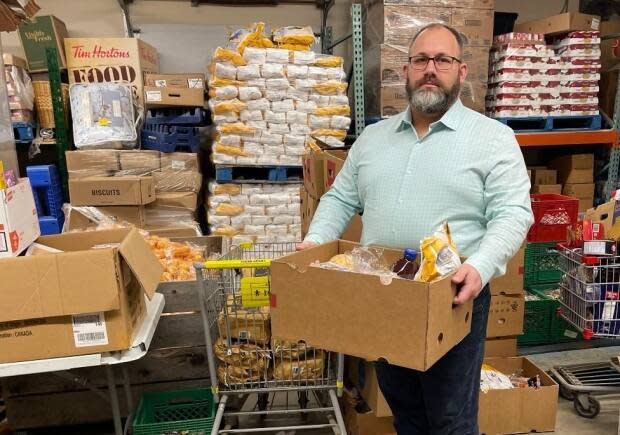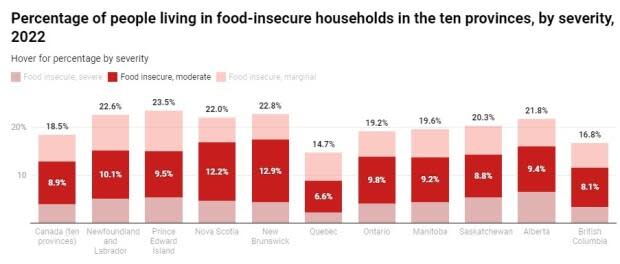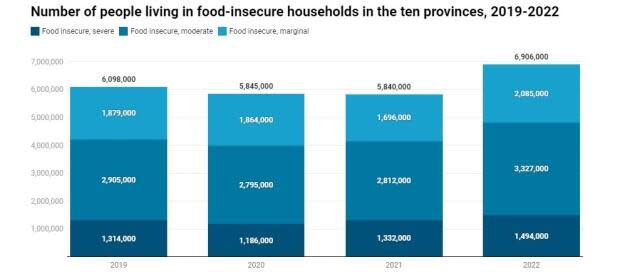N.B. has second-highest rate of food insecurity of 10 provinces

New Brunswick had the highest rate of any province for the percentage of households experiencing "moderate" food insecurity, according to a recent report on food insecurity in Canada.
Only Prince Edward Island exceeded New Brunswick when it came to overall food insecurity, according to the 2022 report by Proof, a research team that investigates and publishes annual reports on food insecurity.
The team uses three definitions to describe food insecurity:
Moderate: "Compromise in quality and/or quantity of food due to a lack of money for food."
Marginal: "Worry about running out of food and/or limited food selection due to a lack of money for food."
Severe: "Miss meals, reduce food intake, and at the most extreme go day(s) without food."
Alex Boyd, CEO of Greener Village, a food bank in Fredericton, said the numbers reflect what they're seeing on the ground.
"The last full-month stat that we have was significantly higher than any month we've ever seen in history," said Boyd. "So it's not surprising to me that those numbers are coming out in the report."

That full-month statistic was 40 per cent higher than the same month last year, so Boyd predicts next year's report on food security will be "probably more grim."
"The situation that we're seeing on the ground is significantly worse than 2022, and 2022 was significantly worse than 2021. So we're basically just seeing continual increases to the demand that food banks are facing."
Boyd said the depth of the deprivation is critical.
"We're not talking about some people who are skipping the odd meal. We have a potential starvation dilemma in Canada," he said.

Based on statistics collected by Greener Village, Boyd said one in five clients has "a net negative income before they make any consideration for food whatsoever."
Atlantic provinces have highest rate of insecurity
According to the report, the Atlantic provinces had the highest rate of individuals living in food-insecure households in 2022 — 23.6 per cent in P.E.I., 22.7 per cent in New Brunswick, 22.5 per cent in Newfoundland and Labrador, and 22 per cent in Nova Scotia.
"During the time of measurement, these provinces were experiencing especially high rates of inflation and unemployment," states the report.
"Previous research has found that higher unemployment rates are associated with higher provincial food insecurity. The relationship between rising food insecurity and the high rates of inflation and unemployment during this time warrant further study."

According to the data compiled by Proof, based on data from Statistics Canada's 2021 Canadian Income Survey, 6.9 million people in the 10 provinces, including almost 1.8 million children, lived in a food-insecure household last year.
The report said this is a "considerable increase from 2021 during a period of unprecedented inflation." In fact, household food insecurity increased last year by 18 per cent over 2021.
"The persistently high prevalence of household food insecurity across Canada highlights the need for more effective, evidence-based policy responses by federal and provincial governments," stated the report, which was released earlier this month.


